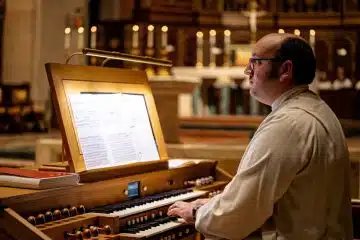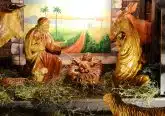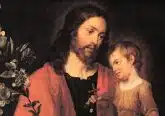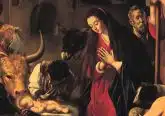A Question of Faith: O What?
I heard that during Advent’s final days the “O Antiphons” are prayed as part of Evening Prayer. What are these antiphons?
As Catholics go through the liturgical year, no day is the same as another. As you mention in your question, one example of this variation is the “O Antiphons,” which are prayed as part of Evening Prayer between Dec. 17 and 23. These prayers honor Jesus through a series of Biblical titles and express hopeful expectation for the Messiah’s coming.
THE LITURGY OF THE HOURS
The O Antiphons are among the Church’s liturgical traditions that have developed throughout history, along with the Liturgy of the Hours, which are specific prayers (including psalms and Scripture readings) offered during the day (morning, mid-day, evening, and night). While these prayers originated among monks and nuns, priests and deacons must pray them, but they are recommended as a form of prayer for everyone.
As part of Evening Prayer, the Church prays the Magnificat, Mary’s hymn of praise to God when she visited her cousin Elizabeth (“My soul proclaims the greatness of the Lord….” in Luke 1:46–55). When the Magnificat is prayed, an antiphon (a short Scripture verse) is said before and after. In the days leading to Christmas, the O Antiphons (which all begin with “O” followed by a title for Jesus) are the short verses recited before and after the Magnificat.
TITLES FOR JESUS
The titles or names for Christ are not always explicit in the Scriptures. Some verses – like those from the Prophet Isaiah
– are suggestive of Jesus, and early Christians applied them to Christ. Taken together, these varied titles provide a theology of the Incarnation, offering insight into the Messiah.
The titles that form the O Antiphons are drawn from Isaiah The first one, O Wisdom, is prayed on Dec. 17 and is derived from Isaiah 11:2: “The spirit of the Lord shall rest upon him: a spirit of wisdom and of understanding.” For Dec. 18, the antiphon is O Adonai (O Lord), taken from Isaiah 33:22: “The Lord is our king.”
On Dec. 19, Jesus’ title, O Root of Jesse, is referenced in Isaiah 11:1: “A shoot shall sprout from the stump of Jesse.” O Key of David follows and points to Jesus’ authority (from Isaiah 22:22), and on Dec. 21, the antiphon, O Radiant Dawn, refers to Jesus as the light of the world (Isaiah 9:1).
O King of the Nations is recited on Dec. 22 from Isaiah 2:4: “He shall judge between the nations, and set terms for many peoples.” Finally, on Dec. 23, we pray O Emmanuel (meaning “God is with us”), the ultimate revelation of the incarnate God, as in Isaiah 7:14: “Therefore the Lord himself will give you a sign; the young woman, pregnant and about to bear a son, shall name him Emmanuel.”
MEANING OF THE ANTIPHONS
The Church has prayed the O Antiphons, composed by an unknown author, since the sixth century. In Latin the titles for Jesus form an acrostic that when spelled backward is “Ero cras” (meaning, “Tomorrow, I come”), reminiscent of the popular hymn, “O Come, O Come, Emmanuel,” which is based on the antiphons.
Praying these verses prepares for the Incarnation’s celebration, marking with increased intensity the seven days leading to Christmas Eve. In a particular way they give voice to the Church’s desire to see the Messiah: O Come, Lord Jesus!
 Father David Endres is associate professor of Church history and historical theology at Mount St. Mary’s Seminary & School of Theology.
Father David Endres is associate professor of Church history and historical theology at Mount St. Mary’s Seminary & School of Theology.
This article appeared in the December 2021 edition of The Catholic Telegraph Magazine. For your complimentary subscription, click here.













